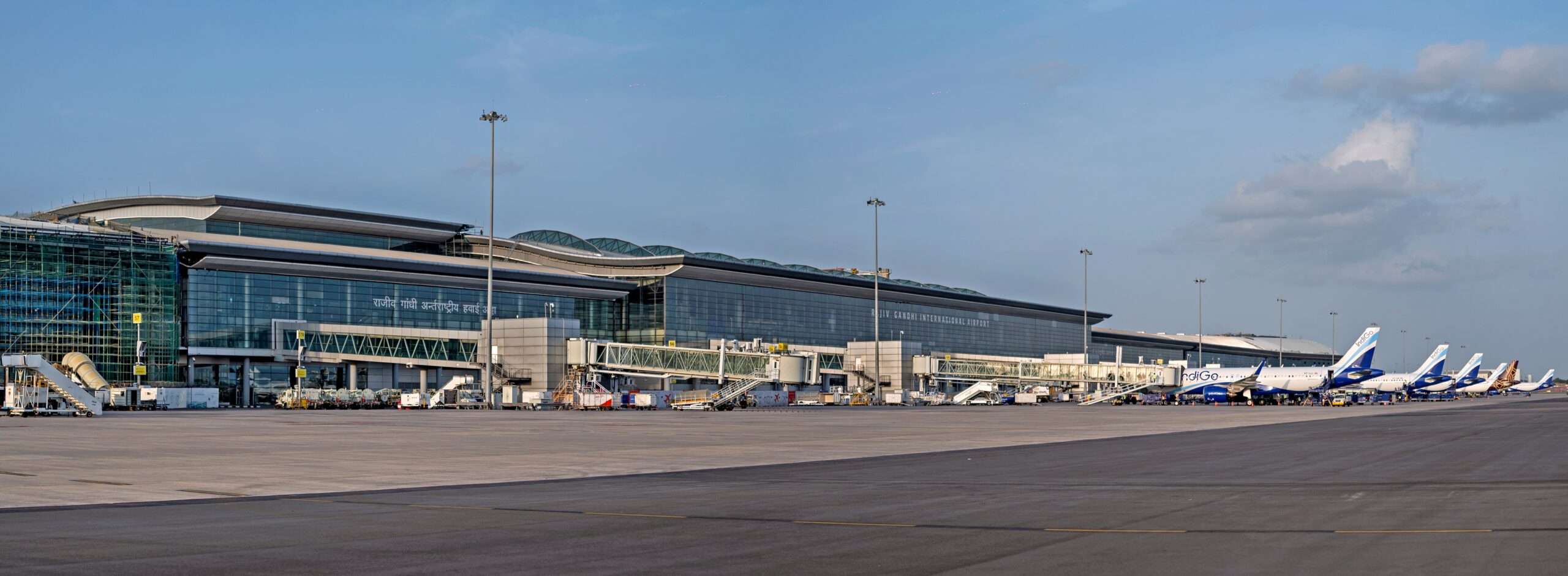The follows techno-economic feasibility studies carried out by the Airports Authority of India. It marks the first concrete step in a broader plan to develop six regional airports across Telangana.
Published Nov 07, 2025 | 12:05 AM ⚊ Updated Nov 07, 2025 | 12:05 AM

The proposed network aims to ease congestion at Hyderabad’s Rajiv Gandhi International Airport.
Synopsis: Telangana has approved the acquisition of about 700 acres in Adilabad for a new joint-use airfield, in the first major step of its plan to expand regional air connectivity under the revamped UDAN scheme. The project is expected to begin operations by late 2027 and ease pressure on Hyderabad’s Rajiv Gandhi International Airport. However, progress on five other proposed airports remains uneven, with hurdles ranging from land disputes and environmental clearances to coordination between state and central agencies.
Telangana’s ongoing effort to improve air connectivity across the state has gained fresh momentum. The government has approved the acquisition of about 700 acres in Adilabad for a joint-use airfield, a project officials say could combine civil and military operations and begin by late 2027.
The decision, formalised through a Government Order issued by Special Chief Secretary Vikas Raj, follows techno-economic feasibility studies carried out by the Airports Authority of India (AAI).
The clearance for Adilabad marks the first concrete step in a broader plan to develop six regional airports across Telangana. The proposed network aims to ease congestion at Hyderabad’s Rajiv Gandhi International Airport and link remote districts under the revamped UDAN scheme.
The national initiative aims to add 120 new destinations and carry an additional four crore passengers over the next decade. The revamped UDAN scheme, announced in the 2025–26 Budget, provides central viability gap funding for many of these projects.
However, the challenges lie in the details. While Adilabad’s plan to revive a dormant airstrip signals progress, the other five proposed sites—Warangal (Mamnoor), Nizamabad (Jakranpally), Peddapalli (Anthergaon), Mahbubnagar (Gudibanda/Devarakadra), and Bhadradri Kothagudem (Palvancha)—remain at different stages of development.
The hurdles range from land disputes and environmental clearances to site suitability tests and coordination among multiple agencies.
Warangal’s Mamnoor airstrip is currently the frontrunner. The Union Civil Aviation Ministry granted in-principle approval after Hyderabad International Airport Limited (HIAL) issued a one-time waiver of the 150-km exclusivity clause, a legal condition that had earlier restricted new airports in the region.
The state government released ₹205 crore for land acquisition in July 2025, with further allocations expected. Officials anticipate AAI tenders by the end of the year and are targeting initial commercial operations in 2027–28. If realised, Mamnoor would become Telangana’s second commercial airport.
The Jakranpally site near Nizamabad has been under AAI’s consideration for several years. An earlier techno-economic feasibility report found the location suitable, but new Obstacle Limitation Surface (OLS) surveys and environmental approvals are still pending.
With no formal site clearance proposal yet submitted to the Union Ministry, the timeline—development from 2026 and operations by 2028–29—remains uncertain.
Plans for Peddapalli shifted this year after Basanthnagar was found unsuitable due to surrounding hills and restricted training airspace. State authorities subsequently pivoted to Anthargaon, and the government has sanctioned a pre-feasibility fee for the Airports Authority of India (AAI) to study the new site.
The Indian Air Force has been consulted on the potential for dual-use operations, and officials have submitted weather and feasibility dossiers to the Centre. If clearances are secured, Peddapalli could progress quickly, but that remains a significant “if”.
Mahbubnagar’s Gudibanda/Devarakadra proposal is still in the planning phase. AAI studies identify it as a candidate for southern Telangana’s agricultural and trade traffic, but land acquisition and central approvals are lagging.
Kothagudem (Palvancha), pitched as a connector for the coal belt and surrounding industries, has encountered roadblocks after the initially identified land was deemed unsuitable, forcing authorities to scout for alternatives. Both projects are slated for later phases, not the immediate UDAN bidding rounds.
According to official sources, project costs are estimated at ₹1,000–1,200 crore per greenfield site in a worst-case scenario, with UDAN-style viability gap funding expected to cover much of the initial expenditure.
Officials caution against excessive optimism, noting that previous attempts to build regional airports have sometimes resulted in underused “ghost runways” when demand projections proved unrealistic.
With around 91 percent of the national capital expenditure envelope reportedly utilised by late 2024, and growing public scrutiny over land and environmental impacts, Telangana must balance its planning zeal with pragmatic realism.
If implemented effectively, these airports could serve as engines for tourism, agricultural trade, and local employment. The state government is promoting early successes, and Chief Minister A Revanth Reddy is actively pursuing central approvals.
However, timelines will depend on Centre–State coordination, forest and environmental clearances, and community consent. In short, the planes may be ready on the tarmac, but the runway is still being paved.
(Edited by Dese Gowda)
